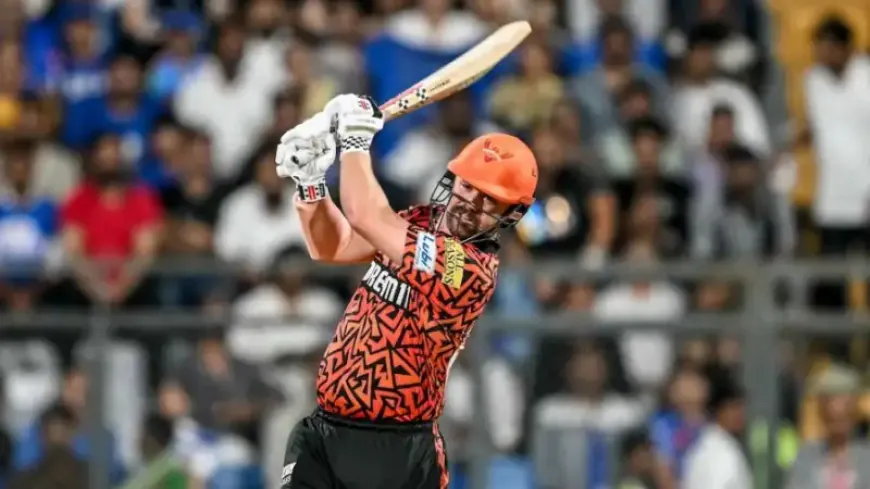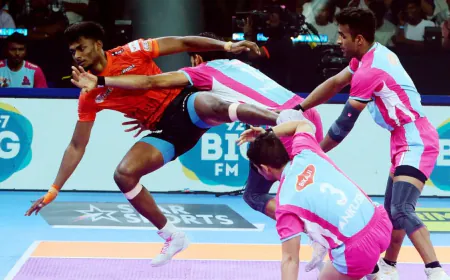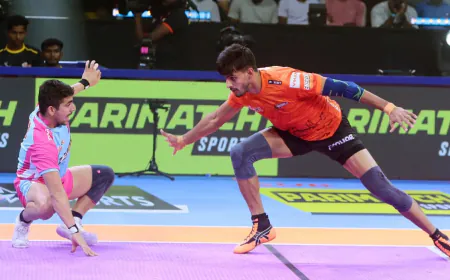Travishek's Battle Against Mumbai Indians Continues
Travis Head's determination shines through as he reunites with Mumbai Indians for a second time in IPL 2025, looking to overcome previous setbacks and guide Sunrisers Hyderabad to success.

The explosive opening combination of Travis Head and Abhishek Sharma, popularly referred to as 'Travishek', has encountered its toughest test against Mumbai Indians (MI) in the IPL. This duo made their presence felt in IPL 2024 when they scored a destructive 68 runs off only 3.4 overs against MI, paving the way for the highest team score in the tournament's history until then. Their opening partnership has had a telling influence on Sunrisers Hyderabad's (SRH) fortunes ever since, with their success clearly correlating with the overall performance of the team.
The numbers are staggering: when Travishek has come out and bowled, SRH has taken charge, compiling a whopping average of 77.80 in victories. When the pair, though, hasn't performed well, their mean is as low as 21.23 in losses. The difference of 56.57 points is the league's top opening pair figure. Even more compelling is when both openers are playing at their best. In victories, their alliance has a mean of 79.52 with a run rate of 14.23. Their losses, however, present a striking contrast with only 19.08 runs at a lower run rate of 8.20.
SRH require their openers to deliver, particularly in the ongoing season, since their middle-order has seen its share of struggles. Heinrich Klaasen, previously in his best shape, has been out of sorts. Nitish Reddy, returning from injury, and Ishan Kishan, settling into his new role, have also not been consistent enough to be banked upon. The need for Travishek's opening combination has therefore never been greater for SRH.
Interestingly, while their respective openings have been impressive, Travishek's batting against MI has not been so ideal. To be precise, MI has been the side that has consistently stifled the pair. On two occasions, both the openers posted partnerships of over 50 runs, but they were still on the losing side, both times at Wankhede Stadium. The key factor in MI’s success has been their ability to slow down the opening pair’s progress, even when they conceded 50+ partnerships. In these encounters, the opening pair's stand was the slowest of all their 50+ partnerships, which played a significant role in SRH's eventual downfall.
In the return game at Wankhede in 2024, Travishek formed a partnership of 59 runs but in 7.3 overs, taking a long time to get there. They were also lucky enough to see both of them get dropped in the first over. Though the duo survived a false shot percentage of 32.6, high as it is in T20 cricket, they were unable to get into their groove. The MI seamers made the most of the conditions, especially the sticky wicket, by pitching a heavy length that put pressure on the SRH openers to spend more time in gaining runs.
In their recent encounter at Wankhede in 2025, SRH again struggled to achieve a large total after a poor beginning. They could only score 162 runs, which MI chased down comfortably with 11 balls remaining. The slow nature of the partnership in the initial overs made sure that Sunrisers could never achieve a fighting total.
This season, the Hyderabad venue was especially difficult. The pitch in the game had experienced numerous high-scoring encounters, but it also toughened batting for those not accustomed to the conditions. Deepak Chahar and Trent Boult made the full use of the swinging ball in the initial stages. Chahar's opening delivery swung away sharply from Head, reminiscent of a similar dismissal during the 2024 final. Boult then came in with a delivery which seam-ed back in and troubled Head once more. Boult's bowling variations, such as his cunning knuckle ball, were too much for Abhishek, and he was sent cheaply back to the pavilion.
MI’s seamers made the most of the conditions, with the new ball causing all sorts of problems for SRH’s openers. The pitch was slightly sticky, holding up the ball, which meant that deliveries that would have normally gone for boundaries were kept in check. Mumbai’s strategic use of field placements and bowling lengths made it even more difficult for the openers to score freely.
By the end of Powerplay, SRH had already lost two wickets, both openers, and the team had a huge mountain to cross. Though their middle order tried hard, they could not stage a comeback and post a stiff total. With Travishek going early, SRH's dreams were shattered yet again, and they ended with another below-par total, which MI chased without any difficulty.
The outcome of this match placed SRH in a precarious position, realizing they have to raise their game in the subsequent matches if they are to stay in the running for a playoff spot. The vulnerability of their first pair against MI remains a major concern, and with the pressure now on, it is apparent that SRH's success this season relies largely on the resurgence of Travishek.





















































